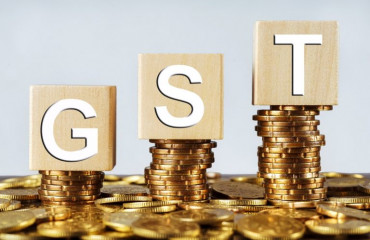
New Delhi: Beefing up the taxpayer roll is the next big task for the Central Board of Indirect Taxes and Customs (CBIC), said the chairman of the body that’s helped stabilize revenue collections and take measures to decriminalize violations—essential ingredients of tax reform.
As per official data, India has over 63 million unincorporated, non-agricultural micro, small and medium enterprises, 99% of which are in the micro sector, defined as having sales of up to ₹5 crore.
New Delhi: Beefing up the taxpayer roll is the next big task for the Central Board of Indirect Taxes and Customs (CBIC), said the chairman of the body that's helped stabilize revenue collections and take measures to decriminalize violations—essential ingredients of tax reform.
"The next big thing is increasing the tax base. We need to grow the taxpayer population. We are working on that jointly with the states. We have worked out a strategy, which we have to finalize. We will do it in a non-intrusive way. That is a big agenda," Vivek Johri said in an interview.
The indirect tax authority's goal is to significantly scale up the goods and services tax (GST) base, which stands at around 14 million tax payers.
"If you compare this tax base with that of other taxes, for example, income tax has a taxpayer base of about 80 million. So there is a big gap. We need to see if this gap is justified or not. Intuitively, the sense is that there is scope for increasing the tax base," said Johri.
Experts welcomed the intention.
"Adopting a structured and focused way is the best approach for improving tax revenue receipts and for enhancing the tax base. This is how the EU had approached tax base expansion many years ago. It signifies that a well-thought-out strategy to fill gaps in tax base will be at play, rather than field surveys employed in the past to widen the base," said M.S. Mani, partner, Deloitte India.
It is in the case of the unregistered sellers—the last link in a long supply chain—where the input tax credit system that helps to collect taxes on the margins at each stage, breaks down.
As a result, the government does not get the taxes on the margins in the last stage of the supply chain although up to that level, goods and services tax is collected and paid to the government.
The government has kept ₹40 lakh sales as the threshold for businesses to take goods and services tax registration, but inter-state trade requires registration irrespective of the sales level.
As per official data, India has over 63 million unincorporated, non-agricultural micro, small and medium enterprises, 99% of which are in the micro sector, defined as having sales of up to ₹5 crore.
Compared to this, the current GST registered taxpayers of 14 million shows that a lot more new GST registered taxpayers could be added.
Getting them to be part of the indirect tax base could improve tax collections in a major way.
It has also had a beneficial effect on direct tax collections as the turnover of the entities got reported and direct tax compliance improved.
The direct and indirect tax authorities now closely share data to improve compliance.
"The other priority for CBIC is that we need to ramp up audits," Johri said. The indirect tax administration is now conducting audits of the initial years of goods and services tax, which has picked up momentum.
GST audits or departmental audits are done to verify the correctness of the declared sales, taxes paid, refunds claimed and input tax credit availed by the business, by going over the tax returns and other records maintained by the business. Any mismatch in information across different documents could raise a red flag.
